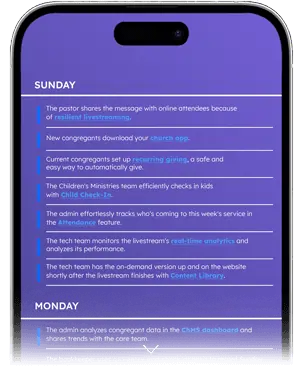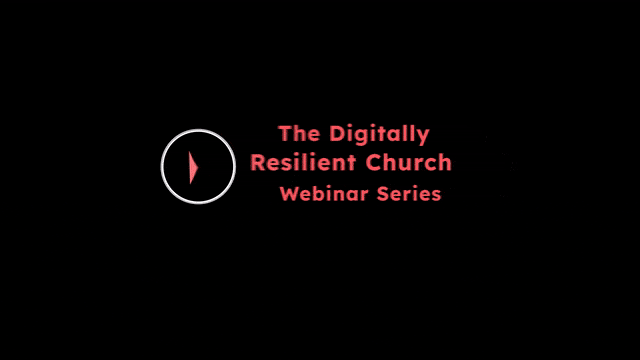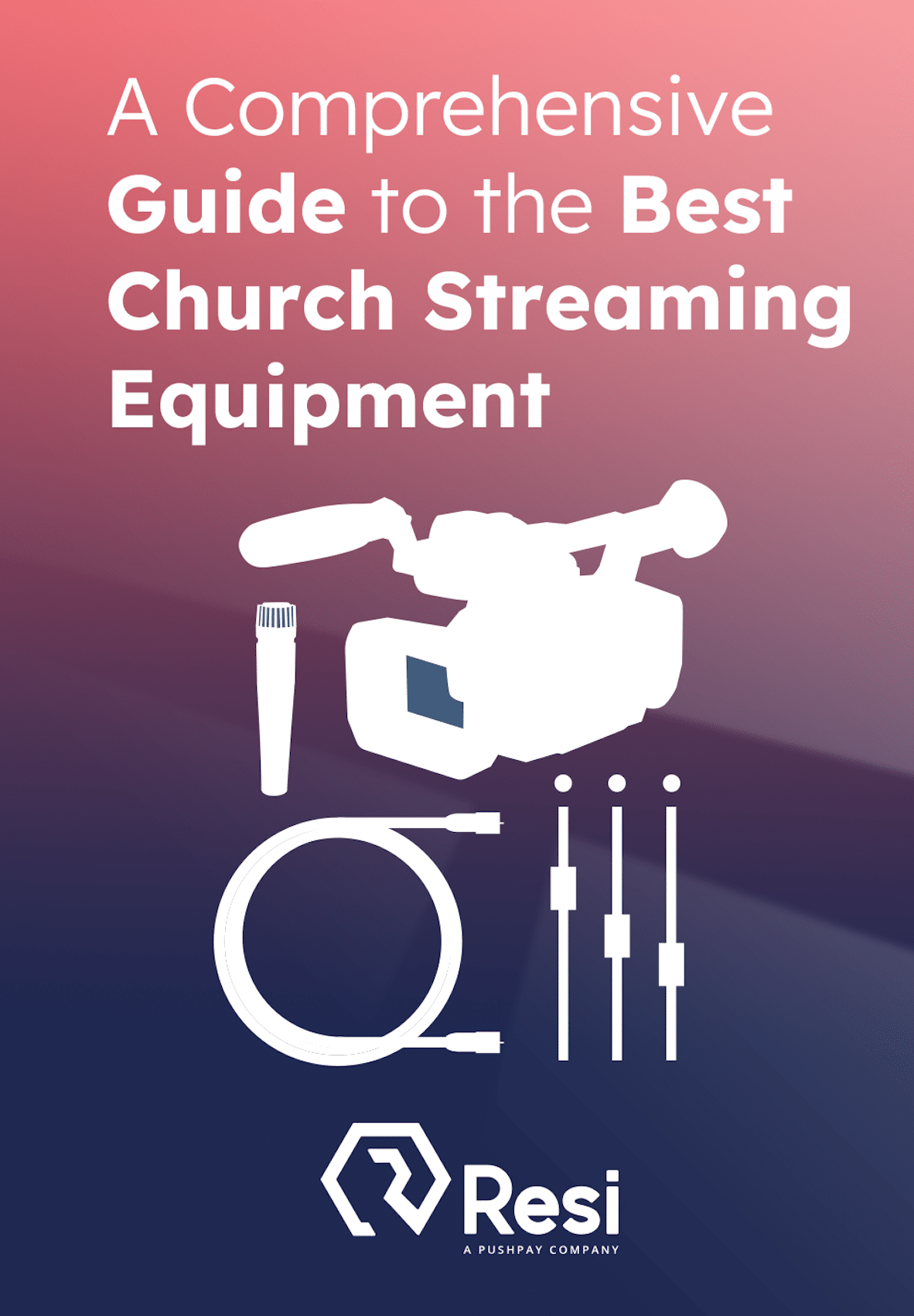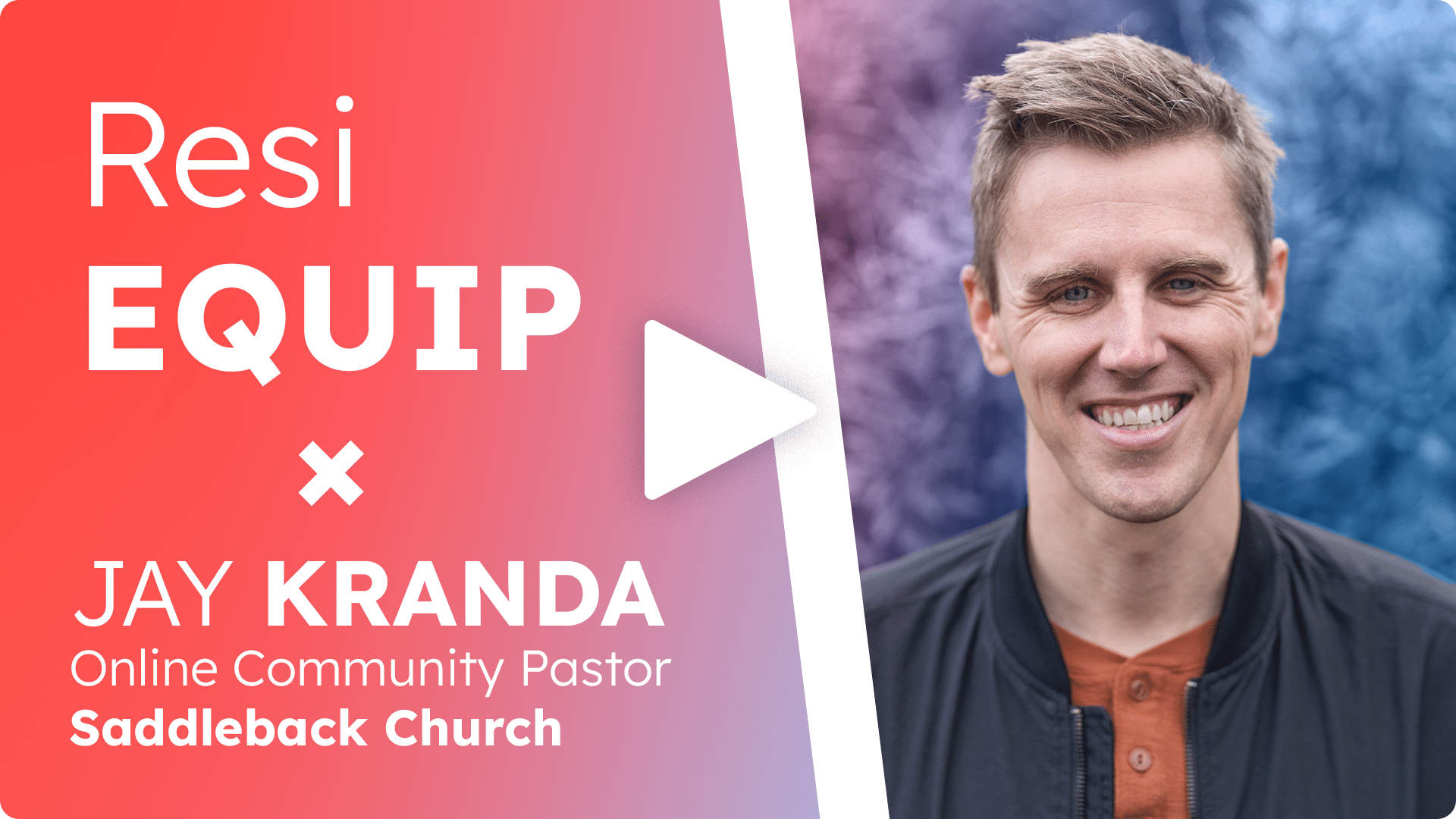
We started Church Anywhere in 2016 before online ministry was cool.
Our church sits on the back end of a dead end street, on the wrong side of a town of about three thousand people. It isn’t the ideal spot to plant a church. Tack on the fact that in 2016, we had satellite internet with 10 mbps download speed and it becomes clear that we definitely didn’t have the ideal setup for launching a full blown online ministry.
But God had other plans.
At the time, we were blessed with a lead pastor named Randy Kirk. He didn’t initially catch the vision of reaching people through online avenues at first, but he was the type of leader that allowed the staff to have opportunities to innovate. He was convinced that if we gave people an option for streaming, they would simply “stay at home in their pajamas,” but he gave us the green light to try it out.
In 2016, online ministry relied heavily on streaming worship services. However, after about a year of doing that with some success, we knew that there was a wealth of unlocked potential that extended far beyond live streaming worship services. Online ministry opportunities helped us move past the stigma that Sunday morning worship is the only way of doing “church.”
Best Livestreaming Equipment
Discover what top-rated equipment we recommend adding to your church streaming toolkit.
Download for free!
By 2017, we started our first two micro-sites, and my job description changed to this: Get to know 100 people online. This philosophical shift towards relational ministry was a fresh revelation for us. We were able to utilize tools like Zoom, Slack, Marco Polo, and others to build relationships and step into the lives of unchurched and churched people outside of the confines of an hour on Sundays.
The Journey to “Church Anywhere”
Our micro-sites opened up avenues into jails and prisons, people’s homes, orphanages, hospitals, nursing homes, elementary schools, homeless camps, and more.
These worship experiences utilized customized digital content that lasts about a half an hour, small group discussions, and mentorship strategies. The micro-site model that we built was a lot more about building relationships that would lead to discipleship rather than just simply an extension of the weekend service.
Around the same time in 2017, we began to play with the idea of making long-form narrative content to infiltrate the entertainment streaming realm. We made a feature-length film, Restore, that was both terrible and inspiring. While it wasn’t a good film, it inspired our volunteers to build upon the concept of using long-form media to strategically reach people with the Gospel message. In 2023, we released I Can in theaters nationwide, and so far, over 1,200 people have given their lives to Christ after watching that film.
In 2020, when the world was shut down and panic was everywhere in the ministry realm, we felt oddly prepared for total online ministry. Our church had significant buy-in on the “Church Anywhere” concept and 2020 solidified the method as valid. By the end of March 2020 we had mobilized online care teams, online gathering groups, and organized a week long event called “Living Room Revival.”
But beyond the content creation and relationship building, a massive shift took place when we formed our digital ministry staff. Prior to 2020, Church Anywhere was led by one staff member and several volunteers, but during 2020 we prioritized staffing the digital side of who we are. We ended up with a Lead Digital Pastor, Digital Youth Pastor, Digital Engagement Pastor, and an office administrator. This team would be the catalyst for shaping a holistic digital/physical hybrid ministry of which we continue to operate.
Going Global
During 2020, we started to see an increase in our global digital reach through Youtube videos, TikTok videos, and Facebook content. Most of this reach came from individual accounts that were trained to become “digital missionaries.” We used this term as a way to help individual content creators share content that points people towards Gospel conversations.
Once engaged, we would pray with people and build relationships with them all over the world. Because of this relational style of digital ministry, we began to see a new way of doing missions work. We could connect with nationals in other countries, build deep relationships with them, and help guide them in ministry. This resulted in our first global micro site in Kenya. Since then, we have three Kenya sites, two India sites, and one ministry partner in Uganda.
The Church Anywhere India site functions like a church plant. We preach for the people of that congregation via zoom once per month, but they meet on a weekly basis in between Zoom sessions. We chat with them every week during our live feed, but beyond that, we chat with the leader nearly every day. Through the generosity of our in person congregation, Church Anywhere India recently was able to secure their very own building, officially becoming our first global church plant through this digital ministry strategy.
In Uganda, we pour into a group of young people called The John 3:16 Film School. Each week, our team teaches around 50 students, usually orphans who live at the school house, how to make films and digital content so that they can help reach their country for the Gospel utilizing the tools that we have learned over the years.
The average age in Africa is around 19 years old, making it a very young country. Young people there are extremely moved through media content, so this strategy of reaching people in Africa through media is extremely valuable. In 2022, John 3:16 Film School translated a film we created at the church called A Father’s Fight into their native language and used the film as the centerpiece for a revival type event that they call a Movie Crusade.
At that event, thousands of people flooded a community park and heard the Gospel through digital content; many for the first time ever. In 2024, our partners at John 3:16 Film School translated I Can our newest film, into their language and did another movie crusade event. Over 7000 people showed up and filled another outdoor venue. After the film, the leader of the school and our Church Anywhere ministry partner made a call for salvation. Twelve hundred Ugandans came forward and accepted Christ as their Lord and Savior and then were paired with local church members for discipleship.
Digital Strategy, Real-World Results
However, one of the big shifts that we saw that we needed to make was in the discipleship realm. Through the years, we realized that our church was good at helping people find Jesus, but not as good with helping them follow Jesus. After seeing how the American Church responded to various events in 2020, it was also obvious that discipleship on a grand scale was lacking as well.
So, we made some significant changes in our ministry philosophy starting in 2022. We disbanded the digital team and reintegrated them back into the fold of the overall staff. This shift allowed us to introduce a hybrid form of ministry structure where each staff member operates in the digital and physical realm.
After making this shift, our staff introduced a brilliant strategy to pair recently baptized people with guides who are committed to walk beside the new believer for the first six weeks of their Christian journey. Our team created a 6-week daily digital resource for these guides and new believers. So no matter if they are in our physical building, at a microsite, online only, or global, we have digital resources that pair real people in discipleship relationships.
The beauty of this strategy is that the guides don’t have to be theologians. They just have to love their neighbor and utilize the resources.
Digital tools allow us to disciple people on a daily basis. We started an initiative called Network Groups that serve as a daily Bible study for adults in our church. Currently, we have about one-fifth of the adults in our church in a daily text thread, diving into God’s word together.
A Shift in Discipleship Called For A Shift In Metrics
With this shift to discipleship and relationship based ministry, we had to shift our metrics. Attendance and offering have never painted an accurate picture of discipleship. So we started tracking next steps in person and online. These include things like donors, baptisms, baptizers, connection opportunities, counseling sessions, people on mission, and more.
At the end of each month, we tally all of those categories up and then divide that number by the total reach for the month (attendance in person, online, and at micro-sites.) This gives us a percentage of people that we believe we have outfitted for that month to become a better disciple of Christ. It isn’t a perfect system, but it is one that allows us to have a baseline for the effectiveness of discipleship within our sphere of influence. It also helps us stay focused on building God’s kingdom instead of our own kingdom.
Our church is a unique case study. We are in a small town. We make movies. We do a ton of digital ministry. We utilize streaming. We quit caring about how many people come on Sundays.
We are a little weird.
But we also stand in awe of an incredible God who would use a broken group of people like us to help rethink that way that ministry is done. We can’t wait to see what direction He leads us next.
A Week in the Life
See how Pushpay and Resi can transform how you engage with your congregation.
Download infographic







